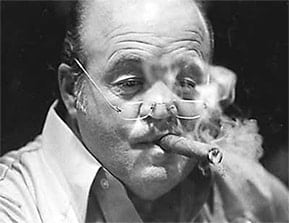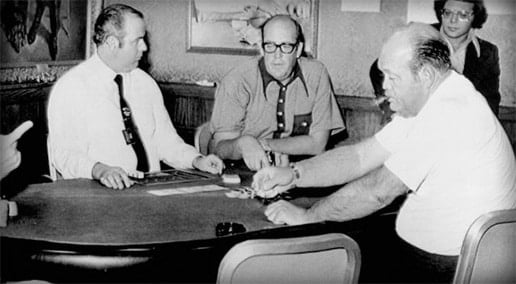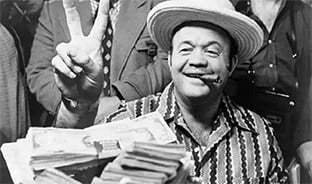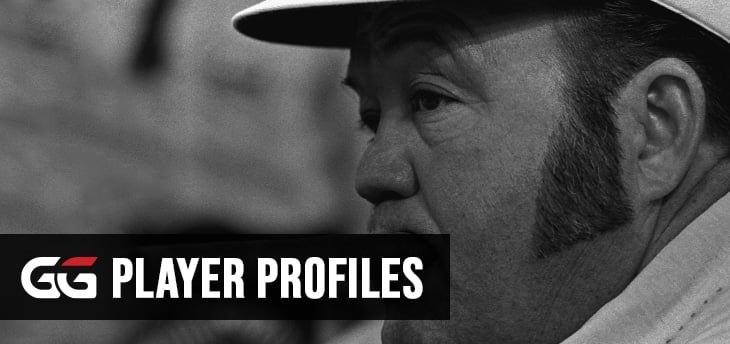WSOP Main Event Champion
Poker has captivated players for centuries, creating many iconic moments along the way. From the rounders of centuries past to Jack Straus’ miracle comeback at the 1982 World Series of Poker (WSOP), to the introduction of the internet and allowing people to test their poker skills with online poker, these stories still remain part of poker folklore today. But it is not just the single moments that define poker’s long and storied history – many of the best players have left their mark on the game with their exemplary play and skill. Names such as Brunson, Negreanu, Hellmuth, and Selbst are set in stone within poker circles. Known for their intense focus, keen analysis, and unstoppable luck, momentous feats by these giants have made them legends amongst poker players across generations. Today, we’ll focus on one such name from the early days of poker: Walter “Puggy” Pearson.
PLAY POKER GAMES AT THE WORLD SERIES OF POKER
Player Overview
Puggy Pearson is widely considered one of poker’s all-time greats. An old name, he was up there with Johnny Moss and Doyle Brunson. His total poker tournament winnings exceed $400,000, and he won four WSOP bracelets. Pearson’s achievements at the WSOP don’t stop there, as he holds a record for attending every WSOP from 1970 to 2005. He even won the World Series of Poker main event in 1973. Outside of his tournament career, he had a significant impact on the game, as he is credited for creating the basic rules for the freezeout style elimination format that countless poker tournaments use today. He, along with ‘Amarillo’ Slim and Doyle Brunson encouraged Benny Binion to create the WSOP, which would eventually become the gold standard for poker tournaments. He was inducted into the Poker Hall of Fame for his contributions to the scene in 1987.

Early Life
Walter Clyde Pearson was born in Kentucky on January 29, 1929, and eventually moved to Jackson County, Tennessee. As part of a massive family, he had eight siblings, Pearson dropped out of fifth grade to help support them, finding his calling as a pool hustler. After trying to impress a bunch of girls at a church function by walking on his hands, he fell on his face, flattening his nose permanently. This disfigurement gave him the nickname “Puggy” amongst the hustlers. At 16, he joined the Navy, playing pool against his servicemen. This is where he learnt the classic games of poker. After three tours, he was hooked on poker and started to travel all over the country to play poker anywhere he could find a big game.

Creating the Freezeout
Back then, poker was only played using a cash game format, with players able to come and go any time they wanted. This format was used in the very first 1970 WSOP, with the selected poker players being asked to vote for the winner, who was the best poker player at the table, after several days of cash game. In 1971, Pearson came up with the idea to invite a bunch of players, each paying a fixed sum and receiving a set amount of chips in return. Instead of a cash game, where players can simply buy back in when they run low on chips, running out means you’re done for good. Players would play until only one was left standing, who would take the prize pool. Pearson suggested this format to fellow player Nick “The Greek” Dandolos, who proposed it to Benny Binion. It was used in the 1971 WSOP and quickly adopted by almost every major poker tournament series.

A Roving Gambler
Pearson won his first WSOP bracelet in 1971 at the Limit Seven-Card Stud event. He then won the 1973 WSOP main event after finishing second in 1971 and 1972, defeating fellow legend Johnny Moss, who had won the 1971 and 1970 Texas Hold’em poker events. That same year, he won the $1,000 No-Limit Hold’em and $4,000 Limit Seven-Card Stud events, making him the first player to win 3 World Series of Poker events in the same year. However, his extensive career wasn’t limited to just poker. He described himself as “a roving gambler” in the 2002 book The Championship Table, and he’s certainly lived up to the title. Whatever you could bet on, Pearson was there to play. He even picked up golf, once beating a PGA Senior Tour pro in a $7,000 bet. To further illustrate his point, he owned a 38-foot tour bus with this motto: “I’ll play any man from any land, any game that he can name for any amount that I can count.” And following that, in much smaller letters, “providing I like it.”
In the last few years of his life, he had to give up tournament play for health reasons. Still, this didn’t stop him from enjoying the high-stakes cash games he frequented when he was a road gambler. It also didn’t stop him from attending the WSOP; at the 2005 final table, he sang his self-written song “The Roving Gambler” to the audience. Pearson passed away on April 12, 2006, after a long history of heart problems.





